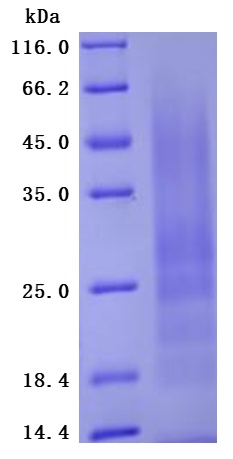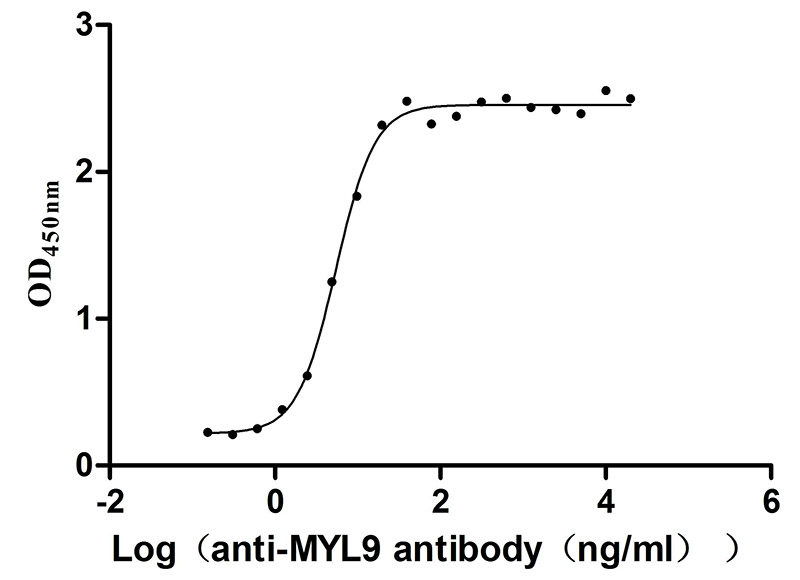The recombinant human MYL9 protein is generated in a yeast expression system. Through the integration of the human MYL9 gene fragment (2-172aa) linked to a C-terminal 10xHis-tag gene into a plasmid vector, the construct is introduced into mammalian cells. Subsequent cell culture facilitates effective protein synthesis. The protein's purity, exceeding 95%, is validated via SDS-PAGE analysis, and its endotoxin levels, below 1.0 EU/ug, are confirmed using the LAL method. The protein's functionality is demonstrated by its interaction with MYL9 recombinant antibody (CSB-RA015318MA1HU), with the EC50 of 4.628-6.430 ng/mL.
MYL9 is a regulatory light chain of myosin, playing a crucial role in various biological processes such as cell contraction, proliferation, and invasion. The MYL9 gene exhibits abnormal expression in various malignancies, including lung cancer, breast cancer, prostate cancer, malignant melanoma, and other tumor types. Moreover, this altered expression is often closely associated with poor prognosis. Serving as both a molecular marker and a potential target, MYL9 holds significant clinical value in early diagnosis, prognosis prediction, and targeted therapy of malignant tumors. Therefore, the preparation of MYL9 protein could facilitate the development and research of clinical drugs targeting MYL9.








